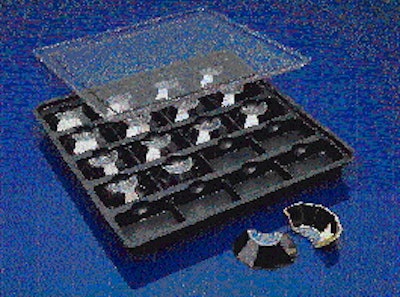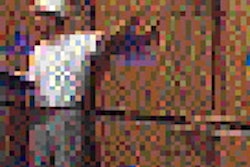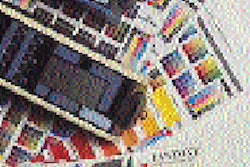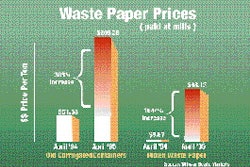A three-dimensional software program helped Alga Plastics (Cranston, RI) win the business of U.S. Precision Lens, a Cincinnati-based manufacturer of plastic and glass optical products. "This was the first time we worked with a packaging designer that had this kind of software capability, and we were impressed with the rapid turnover time," says Bart Millikan, project engineer at U.S. Precision. "In the past we had to wait six to 12 weeks to accomplish what Alga did in a week's time." The software Millikan refers to is ProENGINEER®, a CAD/CAM program from Parametric Technology Corp (Waltham, MA). It lets Alga design a package and make nearly all necessary revisions to it on the computer before cutting any tools or making prototypes. Like two-dimensional programs used by Alga in the past, ProENGINEER lets designers draw and modify parts right on a computer screen. "But with this software you get a much better representation of how the parts are going to fit than you get from a 2-D system," says Alga's Rick Collins. "We're able to draw the tray and the lid and then actually try the fit. Then we can draw the part, again in 3-D, and assemble lid and tray with the part inside this time. It's as if you're looking at a solid model, which is a much better visual image." The net result is that the designer is able to get much closer to what the exact measurements must be while the package is still on the computer screen. So when it's time to build prototypes, there are fewer revisions necessary. That means less time from package design to package manufacture. Another feature of the software that speeds the design process along is that it permits what Collins calls "concurrent engineering." "Different models stored in the computer system change concurrently when any one model is modified," explains Collins. So if a designer makes a change in the drawing of a detail, then all the other models-assembly drawing, mold sections, the manufacturing drawings showing tool paths and cutters-all these are updated automatically. "It means you don't have to go in and make the changes on each individual model," says Collins. In the application for U.S. Precision Lens, the 3-D drawings were sent from designer to customer in hard-copy format. But it's equally possible to send a design via modem if the necessary communications links are in place. "It can save a lot of time," says Millikan. Tray for optical mirrors The tray that U.S. Precision Lens asked Alga to design is a reuseable one that holds 20 optical mirrors while they're transported from fabrication to where they're given a reflective gold coating. Eventually, the mirrors are used to make bar-code scanners that are used by retail stores. Maintaining cleanliness of the uncoated mirrors during transport is essential. If dust or oil contaminate a mirror's surface, the coating will not adhere properly or completely, thus causing a defective part. The snug friction fit of lid to tray helps considerably in this regard. In fact, Alga was able to design the tray to work with an existing lid of polyvinyl chloride used elsewhere at U.S. Precision Lens. Thermoformed PVC trays have been used in the past for similar products. But this optical mirror has what Millikan describes as "multiple optical surfaces," so management sought a material capable of providing better, more customized protection. The resulting tray not only performs better, it costs less. According to Millikan, the PVC trays used for its other products are thermoformed from 40-mil sheet that includes an additive or coating to prevent damage due to electrostatic discharge. The polystyrene tray from Alga is formed from 20-mil sheet with an anti-stat coating and costs about 80% less than the PVC trays. A number of features have been designed into the new tray, too. "Trays we've used in the past have not been what you'd call user-friendly," says Millikan. "Alga added finger holes to assist in removing the part from the package. This improves our quality control procedures by simplifying handling of the lenses when they have to be removed from the trays and sent into the coating operation. By minimizing material handling, we reduce the chance of contamination." Also a useful design feature is the way the internal walls of each cell not only separate one lens from another but also make it possible to stack filled trays without exerting any top-load pressure on the delicate lenses. Depth of draw on the tray, which measures 12.5" x 12.5", is about 1". With all the benefits U.S. Precision Lens has gained from its new tray, it's little wonder that the firm is reexamining the material specs for most of the other transport trays it uses. Already underway is a tray design that will allow the firm to use a single tray for products of different sizes. Once again, Alga and its software-enhanced design capabilities will play a key role. "They've really impressed us," says Millikan.



























